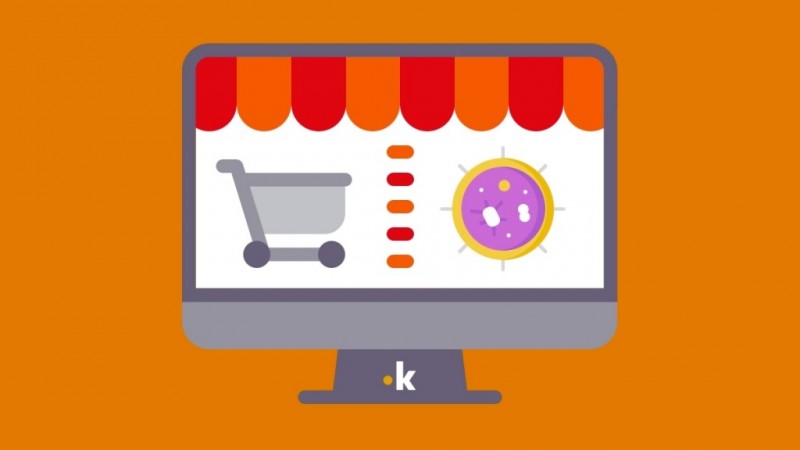
In recent years, the world of retail has experienced a seismic shift with the rapid growth of e-commerce. The convenience of shopping from the comfort of one's home, coupled with technological advancements, has revolutionized the way people buy products and services. This article delves into the e-commerce boom, exploring the factors contributing to its growth, changes in consumer behavior, and the innovative technologies driving the online shopping experience.
The Rise of E-Commerce
2.1 The Emergence of Online Shopping
The concept of online shopping has evolved significantly since its inception. From humble beginnings, where people were hesitant to trust online transactions, it has now become a mainstream phenomenon. Today, consumers can purchase almost anything online, ranging from groceries to electronics, and even cars.
2.2 Advantages of E-Commerce
E-commerce offers numerous advantages that have contributed to its widespread adoption. Convenience ranks at the top of the list, as consumers can shop 24/7 without the constraints of physical store hours. Moreover, the ability to compare prices and read product reviews online empowers consumers to make informed decisions.
2.3 E-Commerce Market Growth
The growth of e-commerce has been nothing short of remarkable. The global pandemic further accelerated this growth, with more consumers turning to online shopping for safety reasons. As a result, the e-commerce market has witnessed an unprecedented surge in sales, with projections indicating sustained growth in the coming years.
Changing Consumer Behavior
3.1 Convenience and Accessibility
One of the primary drivers behind the e-commerce boom is the increasing need for convenience in today's fast-paced world. Consumers value the ability to shop on-the-go, avoiding long queues and crowded stores.
3.2 Mobile Shopping
Mobile devices have played a pivotal role in shaping consumer behavior. With the prevalence of smartphones, shopping has become even more accessible. Mobile apps and optimized websites provide a seamless shopping experience, contributing to the e-commerce revolution.
3.3 Personalization and Recommendations
E-commerce platforms leverage data analytics and AI algorithms to personalize the shopping experience. By analyzing past purchases and browsing behavior, online retailers can recommend products tailored to individual preferences, making the shopping journey more engaging and satisfying.
Innovations in Online Shopping
4.1 Augmented Reality (AR) and Virtual Reality (VR)
Augmented Reality and Virtual Reality technologies have brought a transformative experience to online shopping. Customers can virtually try on clothing, visualize furniture in their homes, and even test makeup products – all from the comfort of their screens.
4.2 Artificial Intelligence (AI) and Chatbots
AI-powered chatbots have become virtual shopping assistants, offering real-time support to customers. They can answer queries, assist in product searches, and enhance customer engagement, thereby streamlining the shopping process.
4.3 Voice Search and Smart Assistants
Voice-activated shopping is gaining momentum. With the rise of smart speakers and voice assistants, consumers can now make purchases by simply issuing voice commands, making the process hands-free and efficient.
The Impact of E-Commerce on Traditional Retail
The growth of e-commerce has inevitably impacted traditional retail. Brick-and-mortar stores are facing intense competition from their online counterparts, leading to store closures and shifts in business strategies.
Challenges and Opportunities in E-Commerce
6.1 Security and Privacy Concerns
With the increased volume of online transactions, ensuring the security and privacy of customer data has become a critical challenge for e-commerce businesses.
6.2 Logistics and Shipping
Efficient and reliable logistics play a vital role in the success of e-commerce. Companies are continually seeking innovative solutions to ensure timely and cost-effective deliveries.
6.3 Competition and Market Saturation
The e-commerce landscape is highly competitive, and businesses need to differentiate themselves to stand out in the crowded market.
6.4 Sustainability and Ethical Consumerism
As consumers become more conscious of environmental issues, there is a growing demand for sustainable and ethically produced products. E-commerce companies must address these concerns to attract environmentally conscious consumers.
The e-commerce boom has reshaped the retail industry, providing consumers with unparalleled convenience and choice. The evolution of consumer behavior and technological innovations will continue to drive the growth of e-commerce in the future. Embracing these changes and addressing challenges will be crucial for businesses to thrive in the dynamic world of online shopping.
Silent Protest March in London Condemning Manipur Violence
The Tragic King of Indian Cinema is Dilip Kumar
Home-Seekers Flock to Gruha Lakshmi Registration in Bengaluru